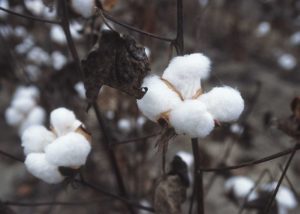Think you know enough about clothing fabrics to stay alive in the outdoors? Take the quiz to find out!
Killer Fabrics Quiz – Do You Know Enough to Stay Alive in the Outdoors?

If you’re not prepared to take the quiz yet, you can first review our tutorial on the best fabrics for outdoor gear and clothing right here:
Most experienced hikers know that “cotton kills,” but few can explain why this is the case, and even fewer can name the other lesser-known fabrics that can be equally deadly. First, a quick overview of how cotton can be so deadly. When adventuring in the outdoors, staying warm is of course essential. Hypothermia kills approximately 1,300 people per year in the United States. Unfortunately, when cotton clothing gets wet, it makes hypothermia much more likely. Scroll down below the “Cotton Ranking” to learn why wet cotton makes hypothermia so much more likely.
Cotton Ranking
PeakScore: 5 (out of 100)
User Rating: 0.25 stars ![]()
Expert Rating 0.25 stars ![]()
Learn more about PeakScore and Ratings.
Pros & Cons
Reasons to buy:
- Fashionable
- Comfortable when dry
Reasons NOT to buy:
- Can kill you
- Loses insulating properties when wet
- Can absorb an incredible amount of water
- When wet, keeps the moisture close to person’s skin
- Since it absorbs water so easily, sweat alone can cause it to lose insulation
- Takes a long time to dry out
- Hypothermia can kill you and cotton makes hypothermia more likely
When cotton is exposed to moisture, it can absorb an incredible 27 times its weight in water. This causes the fabric to lose almost all of its insulating properties. To exacerbate the problem, wet cotton keeps moisture next to the skin and cannot wick it away. As a result, wet cotton has the one-two punch of failing to provide insulation AND actually increasing body heat loss by keeping water trapped against a person’s skin.
The reason cotton has these properties is due to the physical construction of the fiber. Each fiber is a tiny little tube that has six concentric layers. When these fibers get wet, they can fill up with an incredible amount of water and, as a result, eliminates all warm air pockets (replacing them with water). Additionally, cotton fibers are comprised almost entirely of cellulose. Due to the laws of chemistry, water molecules are actually attracted to cellulose. Also, because cotton can store so much water efficiently, it takes a very long time to dry out. These factors create a perfect storm that makes cotton incredibly dangerous to wear in the outdoors. And remember, getting wet in the outdoors doesn’t only happen from precipitation. An adventurer can get wet from a slip in a creek, or from something as mundane as sweat.
So the obvious question is – what are the best fabrics to wear in the outdoors? The most popular options are: polyester, nylon, and wool. Of course, missing from this list is a very popular outdoor insulation – down. Like cotton, down is a natural product, and unfortunately, also like cotton, down loses its insulating capabilities when wet. Despite this fact, due to its extreme weight-to-warmth ratio, down can be a smart part of an adventurer’s gear and wardrobe. It is the standard insulation material used in lightweight sleeping bags and many mid-layer jackets. Of course, the key to making down work is to keep it dry. This can be accomplished by always protecting your sleeping bag from the elements and making sure to have a waterproof outer layer available to protect your down layer, in case bad weather rolls in. With that said, accidents happen, so it’s important to always have a Plan B on how you will keep warm if your down gear gets wet (e.g., other non-down layers; a tent or bivy sack, etc.)
Finally, there are some lesser known fabrics out there that have been making their way into clothing lately that are as equally deadly as cotton. One of these trendy fabrics is bamboo. A lot of bamboo garments have other plant fabrics embedded in them, like Rayon, Modal, Tencel, Viscose, Lyocell and Cupro. These fabrics, like cotton, lose their insulating capabilities when wet, making them a dangerous choice for outdoor usage.
Also, be on the lookout for fabrics that use alternative names, but are actually just cotton. Some examples include denim, flannel, corduroy. While often marketed to outdoor enthusiasts, these fabrics are still cotton and still just as dangerous.
Finally, silk is a fabric that is a bit of a mixed bag. It is often listed alongside fabrics that are appropriate, however, in reality silk doesn’t maintain great insulating properties when wet since it is efficient at absorbing moisture. While silk is clearly a better choice than cotton, with so many superior options, avoiding silk is the best bet.
